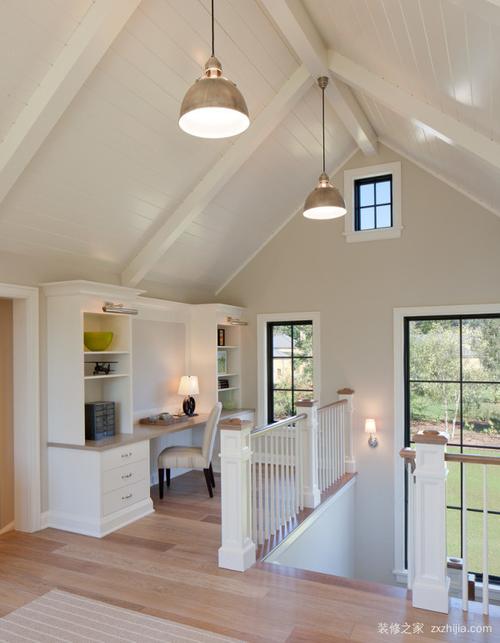嵊州黄金水岸-星云电子股票

2023年10月7日发(作者:危和)
风景园林教育
Study on Doctoral Dissertation Topics of Landscape Architecture in China
中国风景园林专业博士学位论文选题研究
熊 星 /
XIONG Xing
唐晓岚
*
/
TANG Xiao-lan
王燕燕 /
WANG Yan-yan
摘 要:
采用文献计量统计方法,筛选2002—2013年10余年间16所高校风景园林专业及研究方向的371篇博士论文选题特征进行
统计整理和研究。对其数量分布、研究方向、他引频数等数据进行统计、分析,并重点研究了部分被引频次较高论文的选题方
向。以数据的形式呈现出学位论文选题的发展历程以及研究趋势,为风景园林专业相关研究人员的论文选题提供借鉴和参考。
关 键 词:
风景园林;博士学位论文;选题;文献计量统计;定量分析
文章编号:
1000-6664(2015)02-0094-07
中图分类号: 文献标志码:
TU 986A
收稿日期:修回日期:
2014-09-15; 2015-01-08
基金项目:
国家自然科学基金(编号31270746)、国家社会科学基金(编号12&ZD029)、江苏省研究生培养创新工程(编号CXZZ11-
0516)和江苏高校优势学科建设工程PAPD共同资助
Abstract: By using bibliometric statistical methods, the paper researched the topic orientations of the 371 doctoral theses on the study of
landscape architecture of 16 universities from 2002 to 2013. Through the data survey, the paper studied the quantity distribution, research
direction, and quoted frequency statistics for calculation and analysis, and especially focused on the part of highly-quoted literature. This
paper presented the development degree of thesis topics and research trends by using the data form, which provides reference for related
researchers of landscape architecture.
Key words: landscape architecture; doctoral dissertation; topic; bibliometric statistics; quantitative analysis
博士学位论文作为最高层次的学历论文,能反映某一学术领域较高层
次的研究实况和创新能力水平
[1]
。博士学位论文的选题也往往反映这个学
科的前沿和热点以及教学、科研的发展方向等诸多问题
[2]
。
2011年,国务院学位委员会公布的《学位授予和人才培养学科目录
(2011年)》将风景园林新增设为国家一级学科,表明中国风景园林学科
教育和风景园林事业进入一个新的历史发展阶段
[3]
。学科层次的提高带来
机遇的同时也带来了挑战
[4]
。在学科转型发展的时间节点上,研究风景园
林专业历年博士论文选题,能回顾在一个历史阶段中我国各高校风景园林
学科和相关研究方向的研究状况,以及反映新时期学科研究和未来发展趋
势,是了解风景园林学科研究生教育现状及学科发展趋势的重要视角。
LA Education
学博士点获批院校)招生专业,检索风景园林学研究方向博士学位论文,
他
把其中与风景园林学联系最为紧密的“园林植物与观赏园艺”“花卉与景
观园艺”“景观工程”“风景园林学”专业论文全部收录,其他相关专
业论文通过 “园林”“景观”“风景”“绿地”“绿化”“公园”“地
景”“造园”“造景”“城市公共空间”“城市开放空间”“城市森
林”“花境”等关键词进行论文筛选,并逐篇排查,最终得到与风景园林
专业方向较为接近的博士学位论文数量共371篇。论文被CNKI收录的时
间跨越2002—2013年,学位授予单位共16所高校,与之前调查的招生简
章及招生专业目录基本相吻合。这里需要说明的是:首先,由于风景园林
图1 风景园林相关性博士学位论文的授予专业分布(单位:篇)
Fig.1 Professional distribution of relevant doctoral dissertation of Landscape Architecture (unit: piece)
学具备较强的学科交叉性,所收集的论文或多或少涉及一个或多个其他学
科,在逐一排查的阶段,笔者按照论文内容是否符合目前公认的风景园林
关学科的一个或几个研究方向,因此通过专业名称搜索风景园林专业的
[7]
论文并不可行。通过上一个章节所采用的关键词和题名搜索能够筛选出研
究风景园林领域的论文,但容易延伸大量的其他交叉学科论文,不能良好
地反应风景园林专业论文范围内的选题状况。因此,本文采取校别统计和
文章内容筛选相结合的统计方法。
截至2014年,我国共有20所院校获风景园林学一级学科博士点,其
中2011年共19所院校获批,2013年1所院校获批。这20所高校在本专业
中具备相对较强的教师团队及科研能力,能基本反映我国风景园林学研究
方向博士论文的主流水平。在风景园林学提升至一级学科前,这些高校风
景园林学依托建筑、规划以及园艺等相关学科把风景园林研究方向分布在
其二级、三级学科或研究方向下。
通过查阅各高校研究生院(处)官方网站,收集2011年学科调整前的博
士生招生简章和招生专业目录,找到和风景园林相关的“风景园林规划设
计与理论”“景观建筑学”“城市景观与风景园林”“寒地景观规划与设
计”“景观工程”“建筑环境艺术”等详细专业方向,在20所高校中筛
选出16所高校招收风景园林专业或相关研究方向的博士研究生。表1反映
8所建筑类院校招收风景园林相关博士研究生的专业类别和研究方向,招
收专业主要依托建筑学、城乡规划学、风景园林学等相关学科;表2反映
7所农林类院校招收风景园林相关博士研究生的专业类别和研究方向,主
要招收园林植物与观赏园艺学、花卉与景观园艺等园林植物方向学生。
利用中国知网的“中国知识资源总库(CNKI)中国优秀博士论文”数
据库(搜索日期截止于2014年9月),结合20所院校(截至2014年风景园林
学具体研究方向为准则进行逐一筛选;其次,所收集的论文均为网络电子
资源,论文并不是以上高校风景园林专业及研究方向的论文全部,但是这
些论文具有一定的研究价值和代表性。
2.2 授予校别数量分布及分析
371篇博士学位论文授予校别数量分布并不均衡。如表3所示,其中
北京林业大学(174篇) 、南京林业大学(44篇) 、东北林业大学(34篇)、华
中农业大学(21篇)4所农林类高校授予数量占论文总数的73.6%。其与这
几所农林类高校风景园林专业拥有较大的招生规模有直接关系;被收录5
篇以上论文的天津大学(18篇) 、西安建筑科技大学(15篇)、重庆大学(10
风景园林教育
表3 风景园林研究方向博士学位论文授予校别数量分布
Table 3 Institutional quantity distribution of Landscape Architecture doctoral dissertations
高校北京林南京林东北林华中农天津西安建筑重庆同济清华东南哈尔滨工西南交华南理中南林业福建农西北农林
名称业大学业大学业大学业大学大学科技大学大学大学大学大学业大学通大学工大学科技大学林大学科技大学
篇数174443421181510988875433371
百分比/%46.90 11.86 9.16 5.66 4.85 4.04 2.70 2.43 2.16 2.16 2.16 1.89 1.35 1.08 0.81 0.81 100.00
总计
表4 风景园林研究方向博士学位论文授予专业数量分布
Table 4 Quantity distribution of different disciplines of Landscape Architecture
学科专业景观工程建筑学城市规划
篇数1901152110755433331
百分比/%51.21 31.00 5.66 2.70 1.89 1.35 1.35 1.08 0.81 0.81 0.81 0.81 0.27
园林植物与观城市规划建筑设计建筑历史建筑技术建筑设计风景园花卉与景建筑环城市规划及
赏园艺 与设计及其理论与理论科学与理论林学观园艺境艺术其理论
表5 风景园林研究方向博士学位论文授予年份数量分布
Table 5 Yearly quantity distribution of Landscape Architecture doctoral dissertations
年份200220032004200520062007200820092010201120122013总计
篇数235194837414044484935371
表6 风景园林研究方向博士学位论文选题方向数量分布
Table 6 Quantity distribution of topic research directions of Landscape Architecture
研究方向园林植物应用大地景观规划与生态修复风景园林历史理论与遗产保护园林与景观设计风景园林工程与技术其他总计
汇总15887615492371
百分比/%42.59 23.45 16.44 14.56 2.43 0.54 100.00
篇,相近的城市规划专业和城市规划及其理论专业论文被收录数量为3篇
和1篇,这个规划类专业论文数量占论文总数的32.1%。建筑学(一级学
科)研究风景园林方向的论文分布在6个下属学科和研究方向下,总数为
48篇,占论文总数的12.9%。相关专业风景园林研究方向论文数量:景
观工程7篇、风景园林学3篇。
2.4 年份分布及分析
从论文被收录各年份的数量来看(表5),2002—2006年的5年时间,
论文数量从2篇上升至48篇,反映出风景园林学专业方向的博士研究生招
生规模在这一阶段初逐年扩大,以及风景园林作为新兴的博士论文研究方
向对相关学科吸引力的快速上升。2006年之后论文数量呈稳定的态势,
每年论文数量均保持在30~50篇,体现出2006年以后学科发展进入相对
稳定的时期,专业招生和毕业的博士研究生数量也相对稳定。
的42.59%,由于该方向作为风景园林学传统的研究对象,一直保持着论
文的数量优势;大地景观规划与生态修复研究方向论文数量为87篇,占
总论文数量的23.45%,这体现学科近年来对大尺度城乡绿地规划和景观
生态修复课题的关注,在博士学位论文的数量上仅次于园林植物应用方
向;风景园林历史理论与遗产保护、园林与景观设计研究方向论文数量为
50~70篇,也占有一定的数量,尤其是风景园林历史理论与遗产保护方
向论文有61篇,体现出风景园林学科经过长期的发展,对风景园林的历
史、文脉和园林的遗产保护、修复已经成为本学科研究重点之一;风景园
林工程与技术研究方向的论文只有9篇,只占论文总数的2.43%,这从一
定程度反映,风景园林学科对工程和技术类的研究还不够深入;其他类别
中分别是风景园林教育方向有1篇论文,和风景园林专业跨度较大的林业
产业建设研究方向(园林植物与观赏园艺专业)有1篇论文。
3.1 选题研究方向分年统计分析
3 选题研究方向统计分析
参考已有研究文献中对风景园林学研究方向划分的观点,主要依据目
前常设的二级学科划分
[8-9]
,并根据样本论文研究的具体选题,将风景园
林学位论文选题的主要研究方向概括为以下5类:风景园林历史理论与遗
产保护、大地景观规划与生态修复、园林与景观设计、园林植物应用、风
景园林工程与技术。
从表6的数据可以看出:371篇博士学位论文选题范围广泛,涵盖了
风景园林学科研究的各个方向。但从选题研究方向的具体统计结果来看,
又呈现出选题不均衡的态势。
园林植物应用研究方向的论文数量为158篇,数量最多,占论文总量
通过对论文选题方向以及授予年份进行综合分析和交互统计,体现出
论文对各研究方向的关注程度和历史趋势。
从图2可以看出:2002—2004年风景园林博士学位论文被收录数量
不多,各研究方向均低于5篇。2005年至今,园林植物应用方向论文数量
最多,每年被收录文章数量均超过10篇,2008年达到最高峰25篇,近年
来数量有所回落。风景园林历史理论与遗产保护、大地景观规划与生态修
复、园林与景观设计这3个研究方向论文被收录数量均在几篇至十几篇左
右。值得注意的是,2012年风景园林历史理论与遗产保护研究方向的被
收录论文数量在2012年均达到16篇,超过此年度园林植物应用方向论文
数量,体现近年来学科内涵较为成熟后,对园林历史理论和遗产保护方面
96
LA Education
年份
23
图2 风景园林研究方向博士学位论文选题方向授予年份数量分布
Fig.2 Quantity distribution of topic research direction by year
图3 风景园林研究方向博士学位论文分校别研究方向分析
Fig.3 Statistical analysis of topic research direction by degree-granting units
的重视。分年统计来看,另外2个研究方向,大地景观规划与生态修复和学和西南交通大学对大地景观规划与生态修复方向各有8篇、7篇和6篇成
园林与景观设计方向,论文数量呈交错上升分布,说明风景园林专业方向果,均超过其论文总数的50%;天津大学和东南大学对风景园林历史理
在博士论文的层次上关注大尺度的生态、景观规划类课题,同样也关注中论与遗产保护方向有8篇和6篇论文成果,均超过其论文总数的40%。
观尺度和微观尺度的园林和场地设计方法和原理。风景园林工程与技术方3.3 选题研究方向他引频次统计分析
向的论文一直以来都不是博士学位层次论文的研究主流,数量较少,只有
9篇,分布在2004、2008、2010和2013年。
3.2 选题研究方向分校统计分析
通过对学位授予单位与学位论文选题方向的交互统计,可以看出不同
学校在博士学位论文选题中的侧重点。
从图3可以看出:16所风景园林专业方向博士培养学校在研究方向的
侧重点上表现出明显的特征,7所农林类高校均把园林植物应用作为其重
要的研究方向,园林植物应用研究方向占其总论文数量的56.03%,尤其
是华中农业大学和西北农林科技大学这2所高校,其所有论文的研究方向
均为园林植物应用。而9所建筑类高校则没有任何的园林植物应用研究方
向论文,这从侧面反映了各高校的教学研究特色与学科交叉深入程度。北
京林业大学和南京林业大学的论文研究范围最为广泛,涉及了所有5类研
究方向;哈尔滨工业大学、天津大学研究范围也较广,涉及了除园林植物
应用方向之外的全部4类研究方向;大地景观规划与生态修复是最为热门
的研究方向,统计中的16所高校中有14所对这个领域进行了博士论文研
究;风景园林历史理论与遗产保护、大地景观规划与生态修复研究方向分
别有9所和8所高校对其领域进行了博士论文研究。
农林类院校中,北京林业大学对园林植物应用、园林与景观设计、大
地景观规划与生态修复、风景园林历史理论与遗产保护4个研究方向均有
超过10篇论文研究成果,尤其是园林植物应用方向论文84篇,占其论文
总数量的48.3%;南京林业大学对园林植物应用和大地景观规划与生态修
复2个研究方向均有超过16篇和17篇论文的研究成果;东北林业大学和华
中农业大学对园林植物应用方向也均有20篇以上的论文成果。
在学校对某一研究方向的重视程度上,西安建筑科技大学、同济大
在某一个研究领域,往往高水平的论文他引的频次会相应高一些。因
此,科技论文的引用频次,特别是他引频次是客观评价学术水平、论文质
量的重要指标之一
[10]
。由于风景园林专业各方向研究的篇数分布不均匀,
被CNKI收录最多的园林植物应用方向论文数量超过100篇,风景园林工
程与技术方向论文仅为9篇,他引频次总数不能作为反映论文他引数据的
风景园林教育
表8 他引频次排序前10位的风景园林研究方向博士学位论文统计
Table 8 Statistics of the top 10 doctoral dissertations of citation per article
名次博士学位论文题目研究方向学位授予年度他引频次
1园林植物景观的空间意象与结构解析研究园林植物应用2006103
2传统园林种植设计理论研究园林植物应用200580
3地域性景观设计理论研究园林与景观设计200980
4乡村景观在风景园林规划与设计中的意义园林与景观设计200671
5基于地域的文化景观保护风景园林历史理论与遗产保护200662
6现代园林种植设计研究园林植物应用200558
7山地城市景观学研究大地景观规划与生态修复200555
8城市居住区园林环境研究园林与景观设计200655
9园林植物景观评价体系的研究园林植物应用200853
10城市规划区绿地系统规划研究大地景观规划与生态修复200647
表,并且在某种意义上推进了我国风景园林学科各个研究方向的基础性理
论体系:如园林植物应用方向的园林植物景观评价体系、传统种植理论、
现代园林种植设计研究等;园林与景观设计方向的地域性景观、城市居住
区园林研究等;大地景观规划与生态修复方向的城市规划区绿地系统规划
研究等;风景园林历史理论与遗产保护方向的基于地域的文化景观保护。
这也反映出这些领域一直是学科关注的热点。
同创新、共同进步,为学科的进一步全面发展提供有力保障。
注:文中图片均由熊星绘制。
参考文献:
[1] 瞿林东.关于如何确定博士学位论文选题的几点认识[J].学
4 讨论及展望
上述研究数据和分析表明:我国风景园林专业通过相关学科下设专业
进行博士培养,在十几年间得到了长足的发展,取得了丰硕的研究成果。
博士学位论文的数量早年呈明显的递增趋势,近年来数量保持稳定。
在博士学位论文的归属专业方面呈多样化分布,不同的学科积极参加
风景园林学相关方向的研究,各高校在研究方向上强调院校的本身特色,
建筑类院校和农林类院校在论文的侧重点上有较大的不同,但也反映出学
科交叉还不够深入。由于学科整合之前招生专业较为零碎,学位论文所属
专业名称和论文题目及内容存在出入等问题,如某些高校园林植物与观赏
LA Education
Study on Doctoral Dissertation Topics of Landscape Architecture in China
XIONG Xing, TANG Xiao-lan, WANG Yan-yan
*
1 Introduction
The discipline of Landscape Architecture has been authorized by
the Degree Commission of the State Council as the first-level discipline
since 2011 in China. At this transition point, studying of the doctoral
dissertations of the discipline years ago could review the research status
of Landscape Architecture and other relevant disciplines or research
directions, and predict the trend and development about the discipline
research of new periods in the future.
2 The Basic Distribution and Analysis of the Dissertations
2.1 Limitation of the research object
Landscape Architecture had been set as one or several relevant
study directions in many institutions of China before the discipline
adjustment in 2011.
In order to find the appropriate paper of Landscape Architecture,
we were searching China Outstanding Doctoral Dissertation Database (as
of September 2014) in CNKI (China National Knowledge Infrastructure).
The dissertations the authors found from specialized disciplines,
such as Ornamental Plants and Horticulture, Flowers and Landscape
Gardening, Landscape Engineering and Landscape Architecture, which
are close or equal to the Landscape Architecture, have all been included
to the database of this study. The direct relevant dissertations from
other discipline were filtered in by searching "garden", "landscape",
"green land", "park" and other 13 keywords, combined with the
enrollment catalogues of 20 universities with doctoral program of
Landscape Architecture approved by the end of 2014. Eventually the
authors obtained 371 doctoral dissertations related to the Landscape
Architecture direction.
2.2 Institutional distribution and analysis
371 dissertations appeared to be in uneven distribution. Papers
from 4 agricultural and forestry institutions contribute to 73.6% of the
total, and they were from Beijing Forestry University (174 papers),
Nanjing Forestry University (44 papers), Northeast Forestry University (34
papers), and Central China Agricultural University (21 papers). This was
because of the large enrollment scale of these institutions.
Other universities which had published 5 or more papers, such
as Tianjin University (18 papers), Xi'an University of Architecture and
Technology (15 papers), Chongqing University (10 papers), Tongji
University (9 papers), Tsinghua University (8 papers) and the Southeast
University (8 papers), Harbin Institute of Technology (8 papers),
Southwest Jiaotong University (7 papers) and the South China University
of Technology (5 papers), had more foundation on architecture, civil
engineering and urban planning. Moreover, 3-4 doctoral dissertations
published in CNKI from other agricultural and forestry institutions. These
16 institutions, to some extent, have constructed our doctoral cultivation
system in the transition process of Landscape Architecture of China.
2.3 Disciplinary distribution and analysis
Doctoral dissertations were mainly distributed in Architecture,
Forestry and other discipline categories before Landscape Architecture
becoming the first-level discipline. Dissertations taking Ornamental Plants
and Gardening or other plant directions as the main objects accounted
for 52% of the total number of papers. Because the disciplines about
plant have always been the important fields in landscape studies,
especially in agriculture or forestry universities, which have a long
research history in China.
The dissertations in three majors including Urban Planning
accounted for 32.1% of the total papers. The papers from Architecture
(the first-level discipline) related to Landscape Architecture were
distributed in 6 disciplines or research directions, and accounted for
12.9% of the total. The other relevant disciplines published small number
of papers: 7 papers in Landscape Engineering and only 3 papers in
Landscape Architecture.
2.4 Yearly distribution and analysis
The number of papers had been increasing from 2 to 48 during
2002 to 2006, which indicated the Landscape Architecture discipline
was drawing more attention from relevant disciplines, and reflected the
doctoral enrollment scale of the discipline increasing year by year at the
early stage.
The number of papers showed a stable trend with amount
maintaining at 30-50 articles each year since 2006, which reflected the
discipline entered a period of relative stability, and so were the enrollment
and graduate quantities of doctoral students.
3 Statistical Analysis of Topic Research Direction
By reference to the existing division of research direction, especially
based on the current division of the second level discipline, the
authors summarized the dissertations as the following 5 categories:
Landscape History Theory and Heritage Protection, Landscape Planning
and Ecological Restoration, Landscape Design, Landscape Plant
Applications, Landscape Engineering and Technology.
99
风景园林教育
The largest number of papers was proved to be in Landscape Plant
Applications (158 papers) which accounted for 42.59% of the total
papers; The number of papers in Landscape Planning and Ecological
Restoration (87 papers) was accounting for the total number of papers
of 23.45%; Landscape History Theory and Heritage Protection, and
Landscape Design have each amount of papers between 50 to 70; The
direction of Landscape engineering and technology have been published
9 article; Other research directions such as Landscape Education and
Forestry Industry Construction both have been published only 1 paper in
the selected database.
3.1 Statistical analysis of topic research direction by year
The doctoral dissertations about Landscape Architecture have
been published in small quantities from 2002-2004, and the numbers
of papers were lower than 5 in every research direction. The direction
of Landscape Plant Application have published the largest number of
papers since 2005, more than 10 papers each year. Other directions,
such as Landscape History Theory and Heritage Protection, Landscape
Planning and Ecological Restoration, and Landscape Design, have
published several articles to more than a dozen each year. Fewest
dissertations had been published in the direction of Landscape
Engineering and Technology, only 9 papers in of 2004, 2008, 2010 and
2013.
3.2 Statistical analysis of topic research direction by degree-granting
units
By statistically analyzing the degree-granting institutions and topic
research directions interactively, we can see the emphasis point of
topic directions between different institutions clearly. 7 agriculture and
forestry universities took Landscape Plant Application as an important
research direction, accounting for 56.03% of the total papers. On the
contrary, no paper about Landscape Plant Application was published by
9 architectural universities. The study scope of Beijing Forestry University
and Nanjing Forestry University turned out to be the widest, which
covered all of the 5 directions. Landscape Planning and Ecological
Restoration is the most popular research direction, which attracted the
attention of 14 out of the 16 universities.
3.3 Statistical analysis of topic research direction by citation
frequency
High quality papers tend to gain a correspondingly higher citation
frequency in a certain field of study. Because the each directions of
Landscape Architecture was unevenly distributed, this paper took the
number of citations per article as one of the important evaluation index
about the quality of the papers (as of September 15, 2014).
The highest index of the citation frequency per article turned out
to be in Landscape Design (13 per article). The number of citations per
article in other directions ranging from high to low, were Landscape
Planning and Ecological Restoration (10.18 per article), Landscape
History Theory and Heritage Protection (8.33 per article), Landscape
Plant Application (8.02 per article), and Landscape Engineering and
Technology (2.67 per article).
The top 10 doctoral dissertation citations per article attracting
more attention in the past 10 years involved 4 research directions. The
directions of the top 10 papers ranging from high quantity to low were:
Landscape Plant Application (4 papers), Landscape Design (3 papers),
Landscape Planning and Ecological Restoration (2 papers), Landscape
History Theory and Heritage Protection (1 paper).
4 Discussion and Prospect
The data and analysis above demonstrate: overall, Landscape
Architecture and relevant disciplines in China have been in significant
development through doctoral education under the discipline in the past
金莎丽淋浴房-快递物流股票有哪些

更多推荐
中星景园








发布评论